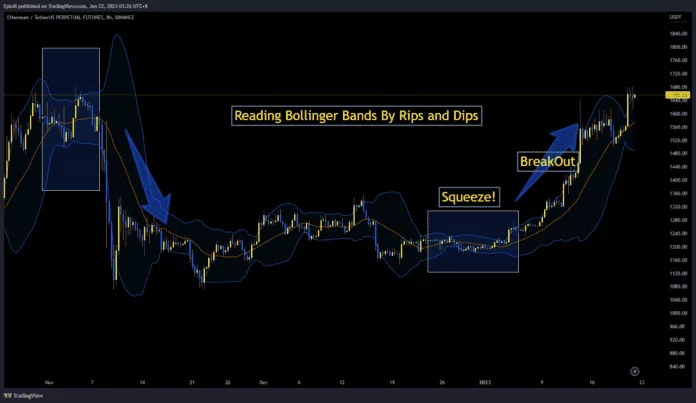Are you a trader seeking to improve your technical analysis abilities? Have you come across Bollinger Bands but aren’t sure how they work or why they’re important? This article was tailor-made for you! It delves into the core details of these familiar terms, giving you a crystal clear understanding on how to comprehend and employ them to elevate your trading. So let’s cut to the chase: what are Bollinger Bands exactly?
Bollinger Bands are a type of a technical indicator that measures market volatility. Financial analyst John Bollinger developed them in the 1980s, who created a unique set of criteria for detecting trend reversals. Basically, these ‘bands’ act like support and resistance levels; signals that tell us when prices may be about to turn around. By using Bollinger Bands, traders can get a better idea of when the market might be overbought or oversold.
In this article, we’ll explore how to read Bollinger Bands and use them to your advantage. We’ll discuss which indicators work best in combination with Bollinger bands, as well as tips for applying these principles in real-time trading scenarios. By the end of this article, you’ll have an arsenal of tools at your disposal–all designed to help you gain an edge on the markets!
A Guide To Understanding How Bollinger Bands Work In Chart Technical Analysis
For traders, understanding the technical analysis of charts is essential in order to profit from the markets. Bollinger Bands, a popular indicator developed by John Bollinger over 30 years ago, are one of the most useful tools for assessing price movements. By combining two concepts–standard deviation and volatility–Bollinger Bands can help traders predict market trends and maximize their profits.
I composed Bollinger Bands of three lines: an upper band, a middle band, and a lower band. The middle band comprises a 20-period moving average that shows where the current price is within the market trend; while the upper and lower bands represent volatility levels. This means that when prices move past either of these levels, it could signal that they are overbought or oversold–giving traders a sign to buy or sell accordingly.
The bands also provide great insight into market behaviour as they contract and expand with changes in volatility. As prices move up and down within the bands, traders can use this information to identify potential trading opportunities and gauge future market direction. With this knowledge, traders can make informed decisions about when to enter or exit positions for maximum profits. It’s an incredibly useful tool for any trader looking to gain an edge in today’s markets.
Now that we have explored how Bollinger Bands work in chart technical analysis, let’s inspect standard deviation and volatility with these powerful indicators.
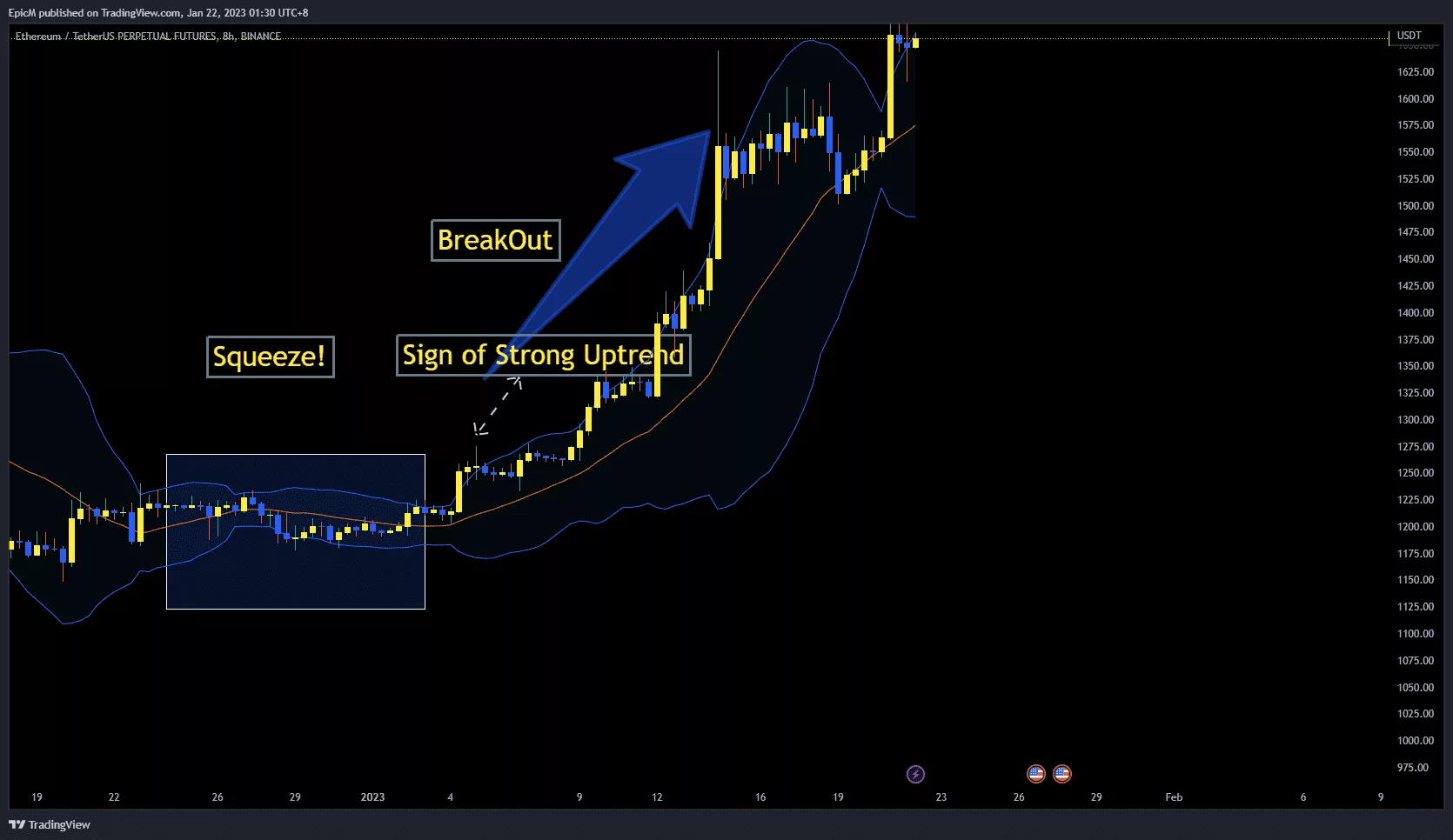
Exploring Standard Deviation & Volatility With Bollinger Bands
Bollinger Bands® are one of the most popular technical indicators used by traders and investors to assess market volatility. In fact, according to a Statista survey in 2020, 44% of traders and investors used Bollinger Bands® as part of their trading strategy. In order to understand how these bands work in chart technical analysis, it is important to explore standard deviation and volatility with Bollinger Bands®.
Standard deviation measures how much the price of an asset varies from its average price over a period. When prices move further away from the average, this can be interpreted as increased volatility. This is where Bollinger Bands® come in – they measure the volatility by plotting lines two standard deviations above and below a moving average, which make up the upper and lower boundaries of the bands. When prices hit these boundaries, it can show whether there is an opportunity to buy or sell signals.
Using Bollinger Bands®, traders can identify three different market conditions:
1) Ranging markets–when prices remain between two bands;
2) Trending markets–when prices move away from the middle band; and
3) Breakouts–when prices penetrate one band beyond the other band.
Knowing how to identify these conditions helps traders better understand if they should look for buy/sell signals or not. It also gives them more insight into what type of strategies they should use depending on market conditions.
By exploring standard deviation and volatility with Bollinger Bands®, traders can gain a better understanding of how to effectively use them in their trading strategy. Armed with this knowledge, investors can then apply this information to use buy/sell signals from Bollinger Bands® indicators for improved profitability in their trades.
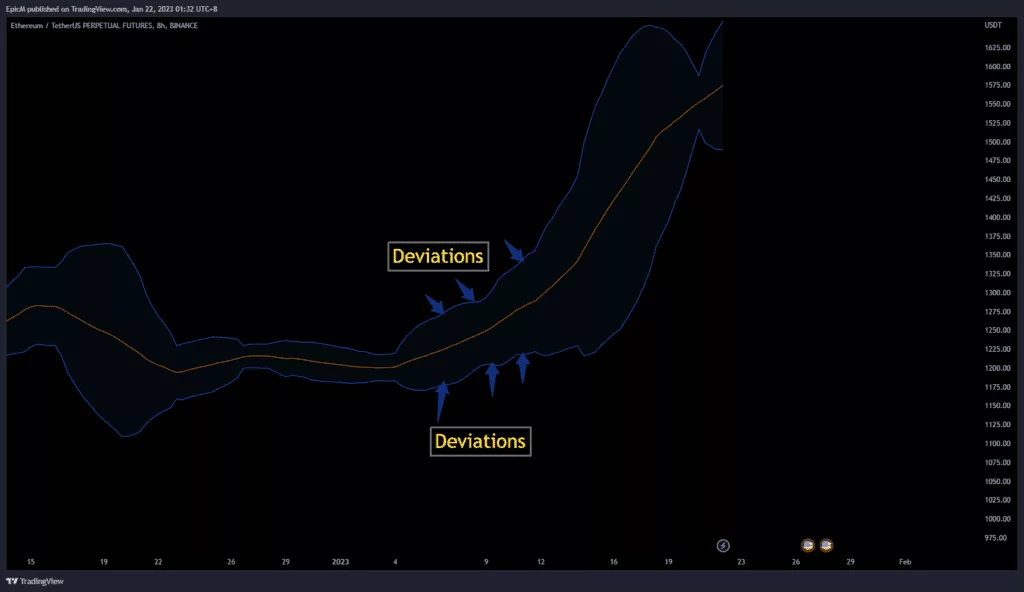
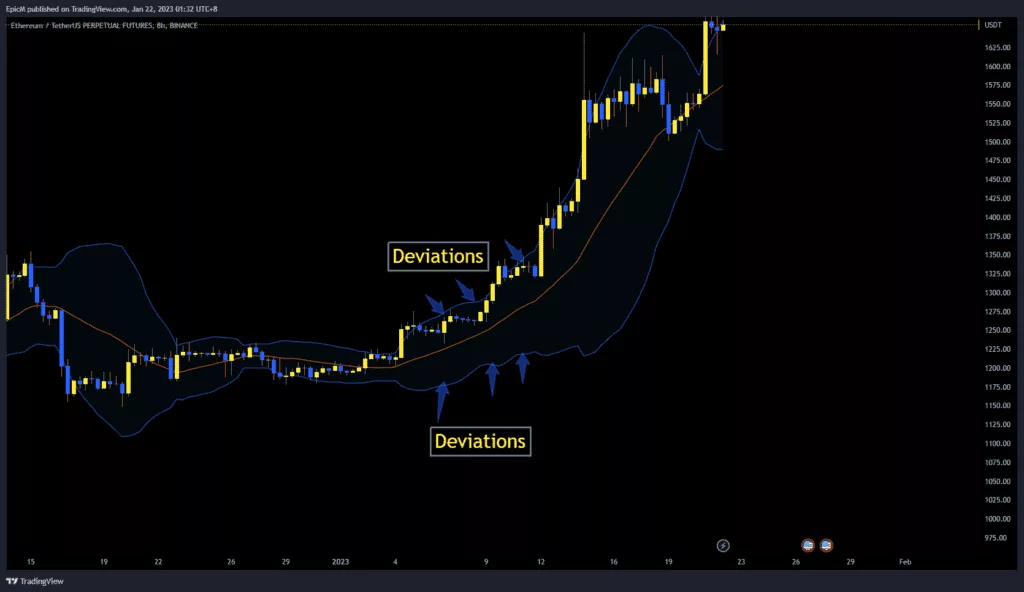
How To Use The Buy/Sell Signals From Bollinger Bands® Indicators
Technical analysts rely heavily on Bollinger Bands® as an indicator to spot buy/sell signals in stocks and make informed decisions in their trades. This powerful tool displays patterns of varying volatility based on stock prices, which could suggest future market movements. Investors can exploit these insights and reap maximum benefits when they implement them in their trading system.
For instance, if ABC Company’s stock price sees considerable difficulties over a certain amount of time period – showing high levels of volatility – then it could be a cue to start trades with low risks but higher returns. By noting potential support and resistance points when the prices nears its upper or lower bands, respectively; savvy traders could position themselves for profitable opportunities whenever there are varying levels of trends forming in such scenarios.
Besides theoretically making trades when prices touches its upper/lower bound (Bollinger Bands), investors may also look out for price breakouts beyond the outer bands that could offer tremendous opportunities for profits too! For those seeking safer investment choices can look at sector-related assets whose actions might reasonably correlate together on a certain level of momentum; by understanding these correlations, it may show about how each individual’s stock moves accordingly given sufficient data miners have mined appropriately under market trends priorly got from analyzing various sources previously known as well as newly discovered too!
By learning how to read and interpret Bollinger Bands®, investors can leverage this eminent instrument to build smarter strategies–helping them maximize yields while maintaining minimal losses effectively. With this boosted knowledge under their belt – along with diligent research done prior to future markets, priorly estimated that is – the prudent investor is now all ready for improved ventures ahead: tapping into robust operating conditions via Bollinger Band tactics!
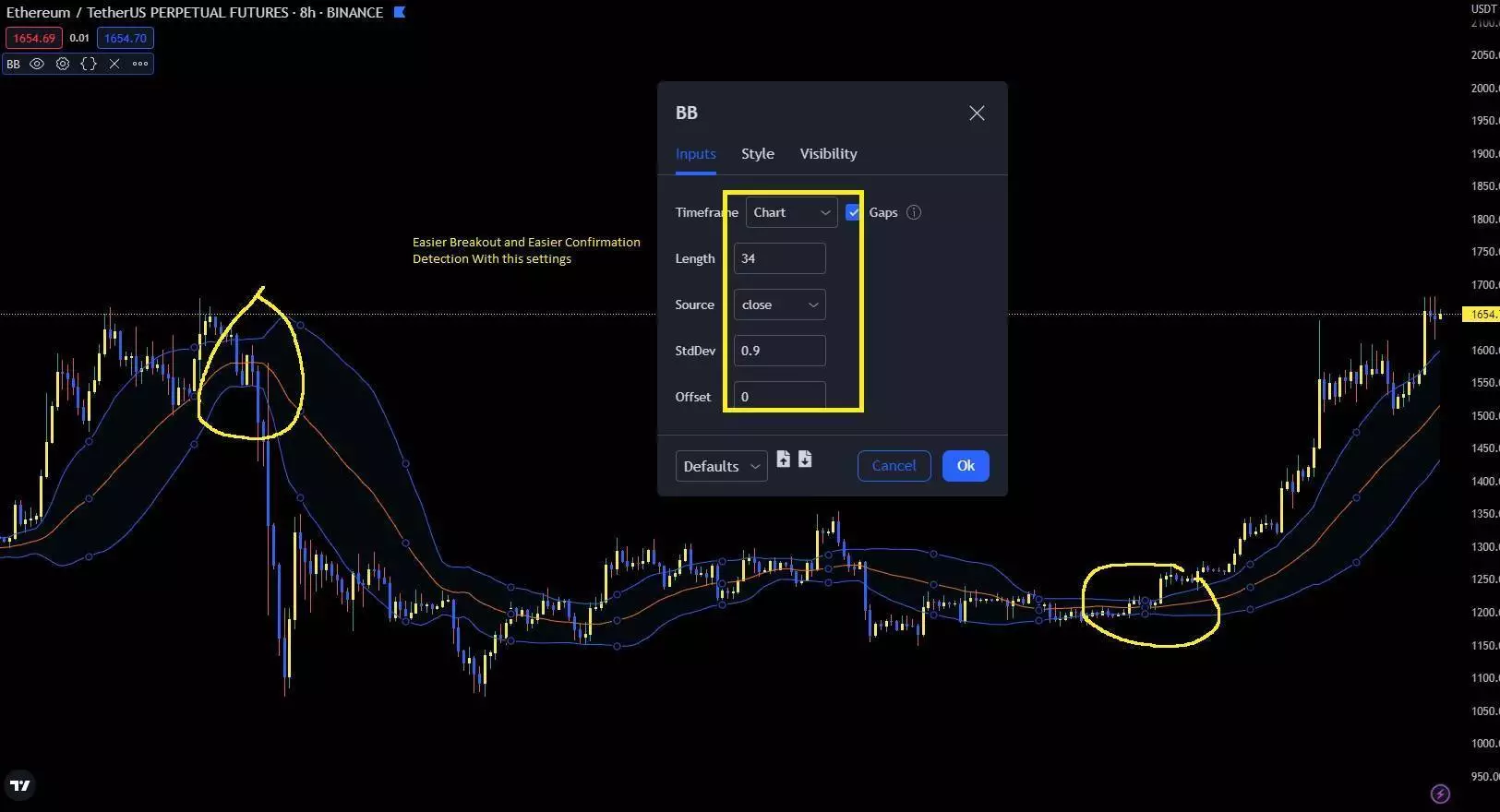
The Smart Investor’s Guide To Leveraging Volatility With Bollinger Band Strategies
In the words of Benjamin Franklin, “An investment in knowledge pays the best interest.” This is especially true for investors hoping to maximize their profits through a comprehensive strategy that includes support and resistance confluence and an indicator like the moving average. The Smart Investor’s Guide to Leveraging Volatility provides a complete picture of how traders and technicians can use these tools together.
This guide explains how to properly interpret various indicators to spot potential buy and sell signals. For example, a signal could be located when prices close above the upper band or when a second low is lower than the first low. Such signals can help with informed decisions on when to enter and exit trades. It covers topics such as overbought/oversold conditions and how to leverage volatility while staying safe from excessive risk levels.
By reading this guide, investors will have the knowledge required to take advantage of volatile markets without being exposed to too much risk. With it, traders are better equipped by understanding support & resistance confluence with an indicator like the 20-day simple moving average -helping them make smart decisions more swiftly!
Maximizing Profits With Support & Resistance Confluence & Bollinger Band Indicator
Financial gain requires the dedication of time, effort, and careful planning. – this is something Benjamin Franklin acknowledged when he said, “An investment in knowledge pays the best interest.” This rings especially true for those hoping to reap maximum benefits from exercising forex or day trading strategies revolving around volatility. The Smart Investor’s Guide To Leveraging Volatility With Bollinger Band Strategies was created as a detailed blueprint for navigating volatile markets with confidence and assurance.
Bollinger Bands® are popularly used technical indicators that encompass various aspects such as swinging levels, trading range signals, overbought/oversold conditions, lagging indications, and more for recognizing buying opportunities – all of which are discussed throughout this guide. For instance, when prices reach lower band values or when they’re high above the upper band, there are chances that price touches upon entry points – whereas if prices go below the established lower band too often may show selling off early-on trend reversals. Traders use said experiences as well signals that come from adjustable periods between four (4) to sixty-six (66) days since the number of periods determine how relatively high or low each band will reach, in contrast with daily market activity.
By gaining insight into swing trading techniques based on Bollinger Bands®, investors will become armed with enough strategic information needed to make well-informed decisions in otherwise uncertain circumstances posed by volatile markets. Therefore, reading through this guide serves as your primary key-point for making smart decisions quicker!
Check this out why i really love this settings!

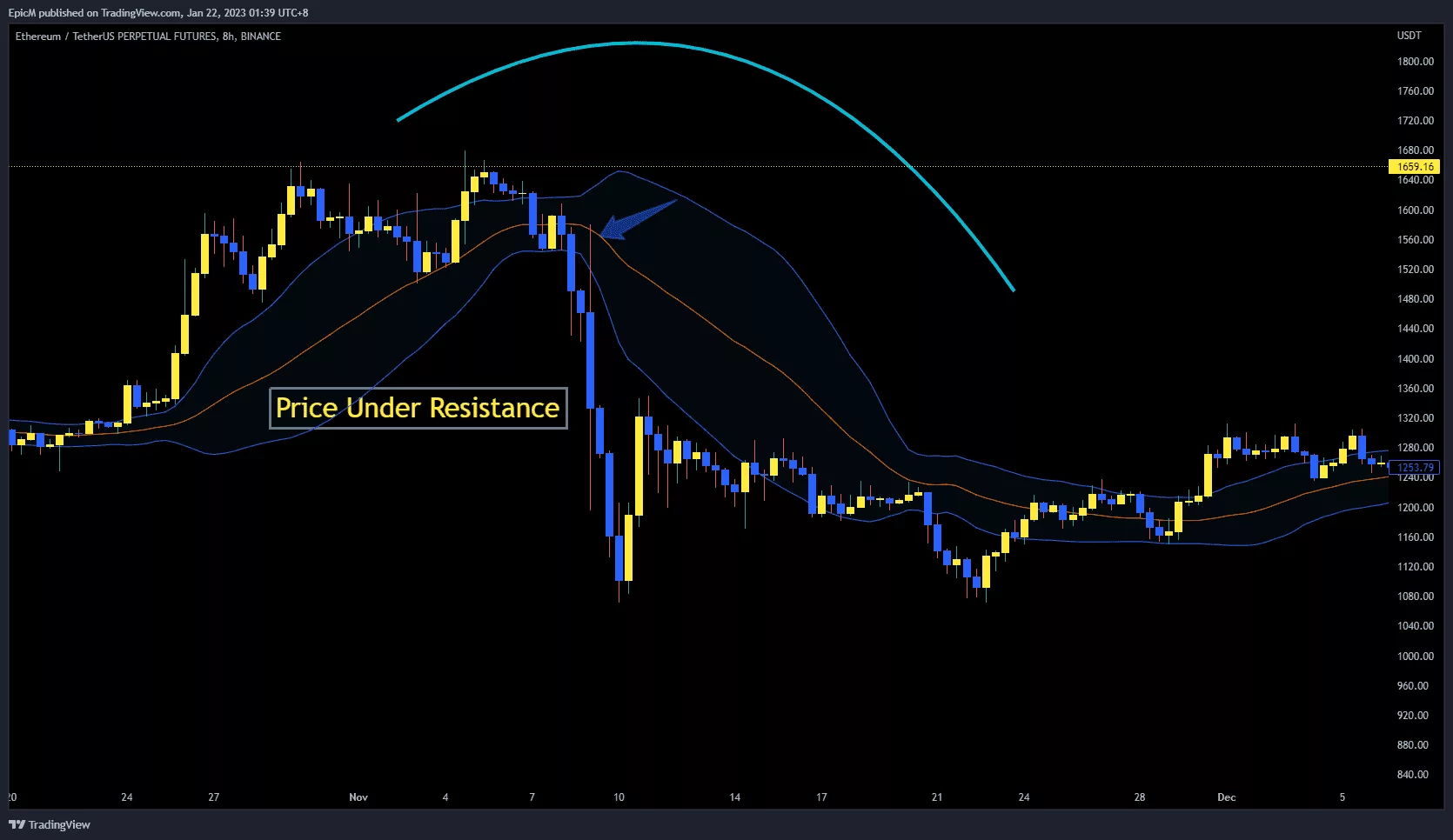
Frequently Asked Questions
What Is The Best Time Frame For Using Bollinger Bands?
Ah, Bollinger bands! One of the most popular technical analysis tools out there. It’s no wonder why so many traders are eager to learn how to read and use them to improve their trading skills. But what’s the best time frame for using Bollinger bands?
Well, let me tell ya–it’s a miracle tool that works in any time frame! Just look at the chart–you can see how powerful Bollinger bands are regardless of whether you’re trading on an hourly, daily or weekly basis. I mean, we can use them with any timeframe and still provide incredibly accurate signals. It’s almost too good to be true!
But wait… before you get too excited and think that using Bollinger bands is some kind of magical solution for trading success, don’t forget that it comes with its own set of risks. You need to understand how these indicators work and use them in the right way if you want to make money from them. Otherwise, you could end up losing your hard-earned cash instead of making a profit. So, before jumping into using Bollinger bands on any timeframe, make sure you do your homework first!
How Often Do Bollinger Bands Provide Accurate Buy/Sell Signals?
Bollinger bands are a widely used technical analysis tool, but how reliable are the buy/sell signals they provide? Alluding to the proverbial crystal ball, that answer is not always so clear. Though there’s no definitive rule of thumb, traders and analysts have long sought to capitalize on these indicators.
The short-term trend of an asset can be determined by how prices interact with the bands in any time frame. During periods of low volatility, the bands may remain close together, while during periods of high volatility they stay further apart. However, when viewed over a longer period, traders may get more reliable buy/sell signals from Bollinger Bands as opposed to shorter term trading decisions. This is because long-term trends will often reveal themselves more clearly than short-term fluctuations.
It’s important for traders to consider their own trading style before placing too much emphasis on buy/sell signals provided by Bollinger Bands. An aggressive trader may find it useful to use smaller time frames, such as 5 minutes or 15 minutes, when using this indicator, while a less active trader might prefer longer time frames, such as daily or weekly charts. Ultimately, whether one finds success using Bollinger Bands comes down to understanding market behavior and having confidence in one’s trading strategy.
How Much Risk Is Associated With Using Bollinger Bands Strategies?
Using Bollinger Bands to improve your technical analysis can be a great way to get an edge in the markets. However, it’s important to understand the risks associated with these strategies before you use them. For Bollinger Bands, how much risk should you expect?
Any type of trading or investing strategy carries some level of risk. Even if you’re following a successful strategy, there’s still a chance that things could go wrong and you could end up losing money. This is especially true for strategies that involve leverage or derivatives, like options and futures contracts.
Bollinger Bands strategies can be effective, but they come with their own set of risks. For instance, traders may find it difficult to accurately gauge volatility levels and time their trades accordingly. Market movements can be unpredictable, and there may be times when price action does not conform to the band’s expectations. Traders need to remain vigilant by constantly monitoring the markets and adjusting their positions as necessary.
When Is It Best To Use Bollinger Bands And When Is It Best To Use Other Indicators?
For technical analysis, using bollinger bands can be a great way to identify trends in the market. But it’s also important to know when they should be used and when other indicators may be more suitable. It’s all about understanding how each type of indicator works and what kind of situation you are trying to identify.
Bollinger bands measure momentum by showing how far away prices are from the average. They come in handy when you’re looking for short-term price fluctuations and need to spot potential entry or exit points for trades. However, this type of indicator may not be as useful for identifying long-term trends, since it does not consider other factors that influence prices, such as news events or macroeconomic data.
Other indicators such as moving averages or Fibonacci retracements can help traders understand longer-term trends in the market. These indicators often incorporate more data points than bollinger bands and can give traders a better picture of what might happen next. Ultimately, it’s up to the individual trader to decide which type of indicator best suits their needs and strategy. Knowing when to use different indicators is an essential part of mastering technical analysis.
How Can Bollinger Bands Be Used To Identify Potential Support And Resistance Levels?
Bollinger bands are a popular technical indicator used to identify potential support and resistance levels. They are created by drawing two lines two standard deviations away from a simple moving average, creating three lines which represent the volatility of prices. I consider the upper line an area of resistance, while we consider the lower line an area of support. By understanding these levels, traders can use bollinger bands to decide when to enter and exit trades.
Using bollinger bands to identify potential support and resistance levels requires close observation of price action within the bands. When prices approach the upper band, I can see it as a sign that prices may soon drop back down because of a lack of further buying momentum. Similarly, when prices approach the lower band, it may signal that there could buy pressure soon due to lack of further selling momentum. Therefore, traders should use bollinger bands as a signpost for potential areas where prices may reverse or continue their trend.
By closely monitoring bollinger bands and other indicators such as volume and momentum oscillators, traders can gain valuable insight into market sentiment and make more informed trading decisions. Understanding how different indicators interact with each other can help traders determine if they should enter or exit a trade at certain price points or wait for more confirmation before deciding. With practice and dedication, traders may find that using bollinger bands helps them improve their technical analysis skills and increase their chances of making successful trades in the long run.
Conclusion
In conclusion, Bollinger Bands are a powerful indicator and can improve your technical analysis. With the right time frame, they can provide accurate buy/sell signals while keeping risk at a minimum. It is important to remember, though, that Bollinger Bands should not be used in isolation, as we should combine them with other indicators for more reliable results.
Overall, Bollinger Bands are a great tool which can help you identify potential support and resistance levels when trading. As markets change and develop, so should your strategy; by paying attention to these bands, you’ll have an edge over the competition. The key is to make sure you understand them correctly and use them with other indicators for maximum benefit.
To summarise, Bollinger Bands can be a valuable addition to any trader’s arsenal if used correctly; like a lighthouse guiding you through choppy waters – use it wisely and watch your profits soar!
